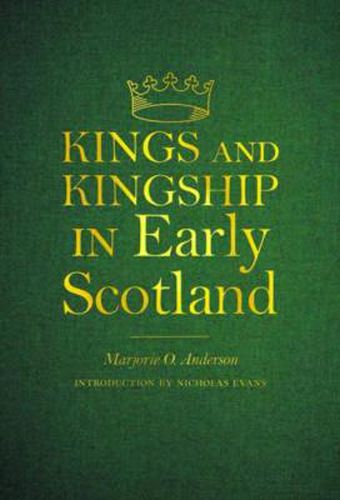Readings Newsletter
Become a Readings Member to make your shopping experience even easier.
Sign in or sign up for free!
You’re not far away from qualifying for FREE standard shipping within Australia
You’ve qualified for FREE standard shipping within Australia
The cart is loading…






The kingdoms of the Dal Riata and the Picts, by their union in the ninth century, formed the nucleus of medieval Scotland. The author, a recognised authority on sources of early Scottish history, has made a fresh critical analysis of the evidence available from regnal lists and Irish annals, covering the sixth to ninth centuries. The regnal lists have been analysed and the inter-relationships of the texts established, to give the probable substance, and to some extent the form and age, of their prototypes. The chronological evidence of annals and prototype lists is then compared in detail. These sections provide a basis for a historical section, occupying nearly a third of the book, which should appeal to all who take a serious interest in early Scottish history. The emphasis throughout is on kingship rather than individual kings. The book ends with a collection of texts. Some chronological and other matters are expanded in appendices, and there are regnal, genealogical and textual tables. This edition includes a new introduction and a bibliography of recent scholarship by Nicholas Evans, honorary research fellow at the University of Glasgow.
$9.00 standard shipping within Australia
FREE standard shipping within Australia for orders over $100.00
Express & International shipping calculated at checkout
The kingdoms of the Dal Riata and the Picts, by their union in the ninth century, formed the nucleus of medieval Scotland. The author, a recognised authority on sources of early Scottish history, has made a fresh critical analysis of the evidence available from regnal lists and Irish annals, covering the sixth to ninth centuries. The regnal lists have been analysed and the inter-relationships of the texts established, to give the probable substance, and to some extent the form and age, of their prototypes. The chronological evidence of annals and prototype lists is then compared in detail. These sections provide a basis for a historical section, occupying nearly a third of the book, which should appeal to all who take a serious interest in early Scottish history. The emphasis throughout is on kingship rather than individual kings. The book ends with a collection of texts. Some chronological and other matters are expanded in appendices, and there are regnal, genealogical and textual tables. This edition includes a new introduction and a bibliography of recent scholarship by Nicholas Evans, honorary research fellow at the University of Glasgow.